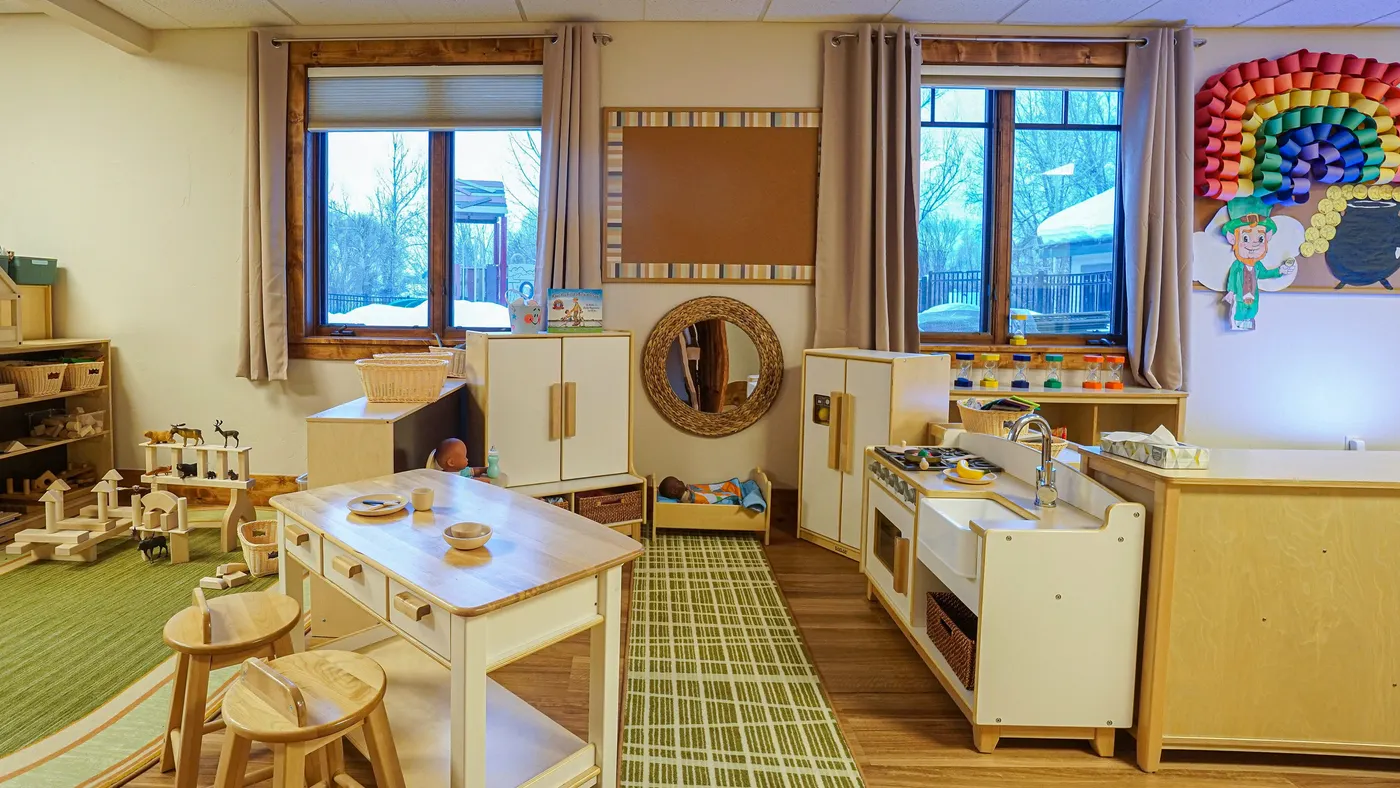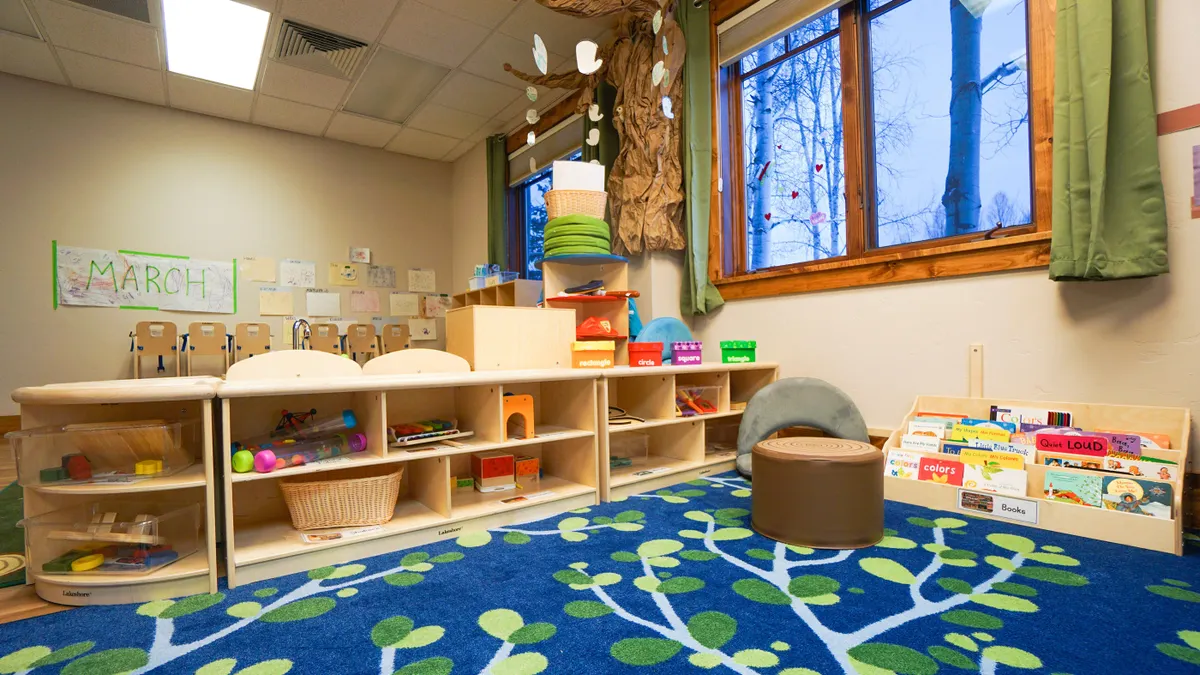This is the second installment of a five-part series on employers offering on-site day care.
Employers that have built on-site day care centers are wildly enthusiastic, if not evangelical, about their child care benefit.
They readily share photos and studies. They are bursting with heartwarming anecdotes about toddler Halloween parades around the office and fresh-baked cookies in the center's lobby.
But on-site care is a significant commitment and investment, and HR professionals can face significant headwinds in making the business case for such a benefit.
The potential payoff
For those who do the research, make the investment and break ground, the return on investment is real.
Steamboat Ski & Resort Corp., a Colorado ski resort operator with on-site day care, partnered with working parent advocacy group Moms First and Boston Consulting Group to study the effect its child care center, which opened in December 2022, has had on the workforce.
The study found that roughly 90% of employee parents surveyed said they still intended to be working for the company a year down the road. That’s significant given that the leisure and hospitality industry faces some of the highest quit rates — measuring about 204% above the national average as of a year ago.
While the $200,000 annual investment Steamboat makes in its center may sound daunting at first, it’s “well worth every single penny” when considering the recruitment and retention benefits, Loryn Duke, Steamboat’s communications director, said. “There are numbers out there about how it costs two times the salary of any employee to recruit a new employee when you have someone leave,” Duke said. “If we were to lose two $50,000 employees — we’ve already justified the cost of a $200,000 subsidy if we can retain those two employees.”
Whirlpool Corp., which launched its day care in 2019, has found it difficult to track the ROI since the COVID-19 outbreak, but Sara McLeod, director of global compensation for the company, said retention rates for workers with children at the center exceed those for the rest of its workforce.
“We’ve heard a lot of anecdotal stories from new hires that this was a primary component of their decision to join Whirlpool,” with some employees saying they don’t want to leave because they don’t want to lose access to the center, McLeod said.

An RTO draw
Patagonia, headquartered in southern California and famous for its culture and benefits, doesn’t need help with recruiting or retention, but Sheryl Shushan, director of global family services at the company, said the benefit improves productivity. Because employees are less stressed overall, they have additional capacity and the ability to lean in and work harder on challenging projects, she said.
An on-site child care center also can support another priority for many companies at the moment: a return to the office.
Qualtrics, an experience management tech company, requires that employees be in the office three days a week — but some parents come in five days a week, Chief People Officer Julia Anas said, because that’s where their child care is.
“We definitely are talking to employers now who see the development of child care either in their office tower, maybe in partnership with the building owner or a developer, as something that they are looking at as a nice return-to-work benefit,” said Nicole Riehl, president and CEO of Executives Partnering to Invest in Children, a Colorado-based group that advocates for employer solutions to the dearth of child care options. “Especially now that the value proposition has really changed for many people in the workforce.”
Addressing employers’ reservations
Despite the potential ROI, employers tend to have specific reservations about getting involved in on-site care, according to providers who have worked with dozens of employers exploring the idea.
The first is risk: What does it mean to have children on site? Assuming liability for children can prove intimidating and provoke nightmare visions of worst-case scenarios. A glance at the regulations for Colorado, where Steamboat Resort is based, shows a vast list of requirements for staff qualifications and training, staff-child ratios, medication distribution, naptime safety and much more.
There are ways to mitigate risk, Riehl said. Since child care operators tend to manage these aspects, it’s paramount to highlight those concerns at the outset to help choose the right operator, she said. Employers can and should familiarize themselves with the requirements, so the guardrails are clearly laid out with their operating partner, she said. Some employers even decide to self-operate to have full control over licensing and regulatory requirements.
Cost is another big factor — with a high degree of variability. The business models for large, nationwide operators versus small, more locally based operators may look drastically different, Riehl said, and typically there will be a conversation about who owns the bottom line.
In other words, an employer might choose to provide the space but bring in an operator that controls nearly every other aspect of the business, with a goal to break even or potentially turn a profit. The bottom line in that model would likely be owned by the partner. On the other hand, the more the employer is involved in elements like teacher pay and tuition subsidization, the more the employer owns the bottom line, Riehl said.
For facilities serving 70 to 120 children, “in most cases, we see employers contributing anywhere from $100,000 a year to upwards of a million dollars a year to make sure that these child care operations are continuing to run and are sustainable,” she said. “On average, it’s probably closer to the $250,000 range.” There may be additional facility expenses and property taxes as well, she said, and that annual cost doesn’t include the initial startup costs, such as the capital required to build a new facility.
One operator, Bright Horizons, works with HR staff to help develop a pitch for those at the top.
“The HR team or that office location has to make the business case, saying, ‘I want to spend $4 to $6 million and here’s the return I anticipate from it,’” Priya Krishnan, chief transformation officer for the company, said. “We constantly talk to clients and say, ‘This is not a cost, it’s an investment. Let us help you make that business case.’”
Equity is the final reservation both Krishnan and Riehl tend to hear about. Will workers who don’t have children or who work at company sites without child care options be angry about being left out of this substantial benefit?
At Qualtrics, which only offers child care at its headquarters, Anas said the offering has spurred requests to expand the benefit to other locations — but not resentment.
“What we have found time and time again in working with employers is that is just really not an issue,” Riehl said. “If anything, we hear from employers that having on-site child care has actually enriched their workplace and has added to their culture. It’s become part of the fabric of their organization.”
Visuals Editor Shaun Lucas contributed to this story.









